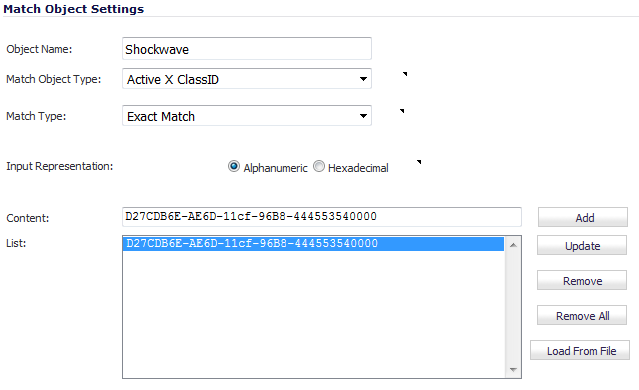
One of the most useful capabilities of Application Control is the ability to distinguish between different types of ActiveX or Flash network traffic. This allows you to block games while permitting Windows updates. Prior to Application Control, you could configure SonicOS to block ActiveX with Security Services > Content Filter, but this blocked all ActiveX controls, including your software updates.
Application Control achieves this distinction by scanning for the value of classid in the HTML source. Each type of ActiveX has its own class ID, and the class ID can change for different versions of the same application.
Some ActiveX types and their classids are shown in ActiveX Types and Classids.
Example of ActiveX-Type Match Object shows an ActiveX-type match object that is using the Adobe Shockwave class ID. You can create a policy that uses this match object to block online games or other Adobe Shockwave-based content.
Example of ActiveX-Type Match Object
You can look up the class ID for these Active X controls on the Internet, or you can view the source in your browser to find it. For example, Example Source File for Shockwave or Flash shows a source file with the class ID for Adobe Shockwave or Flash.